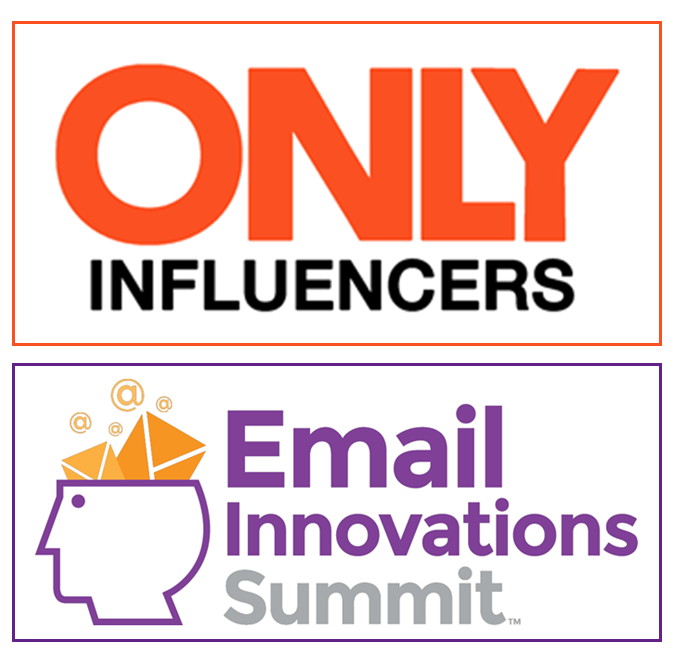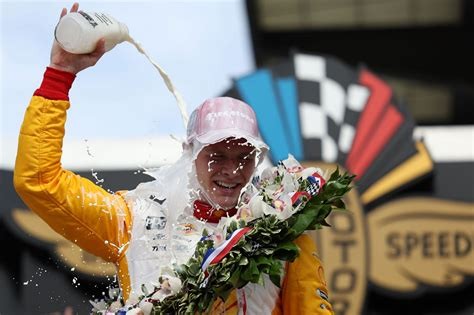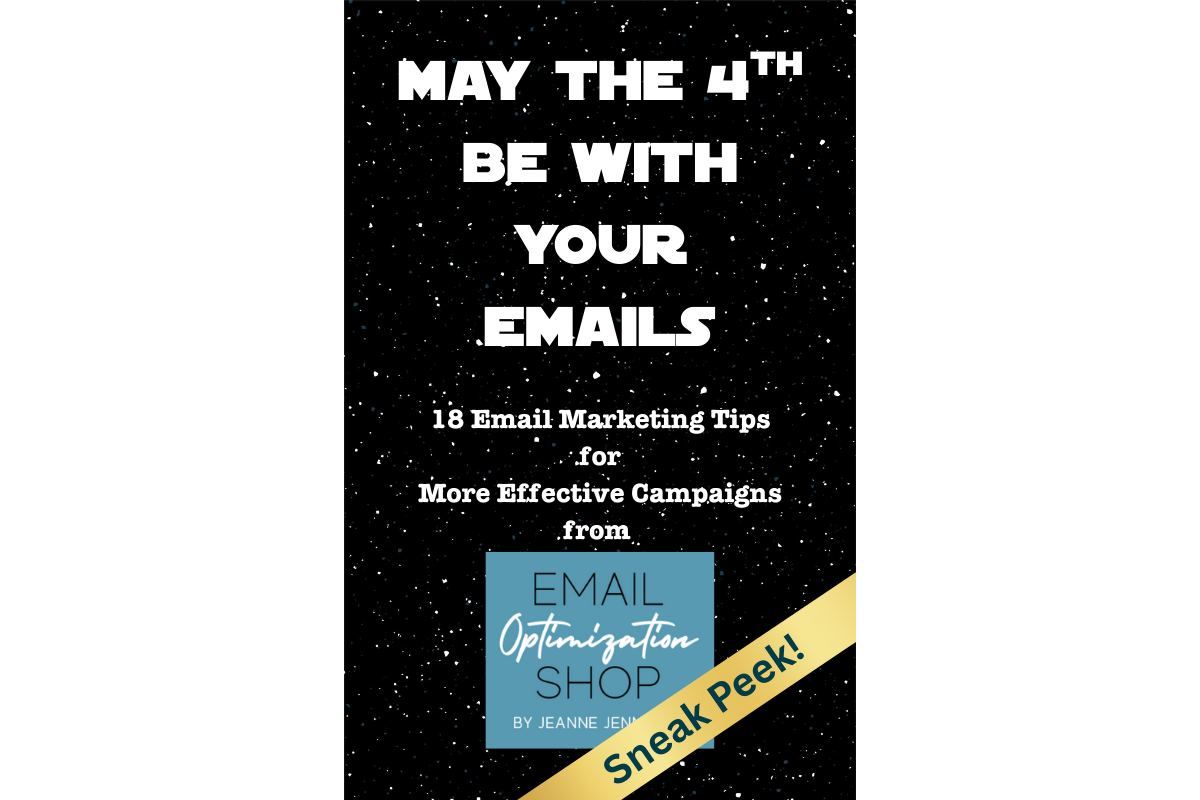Tamara Gielen, Be Relevant, and I were really excited about the positive response our presentation ’35 Great AI Ideas in 35 Minutes’ received at Email Innovations World 2024!
For those who missed it, I’m sharing my 18 ideas in a series of 3 blog posts. You can read the first one now on the Only Influencers blog; this is the second. Here’s the third (if you like these, sign up for my free email newsletter (it’s in the right rail) and we’ll deliver more content like this on AI and email marketing to your inbox!).
I’m including the slides from my presentation for visual appeal!
7. Create your own custom GPT
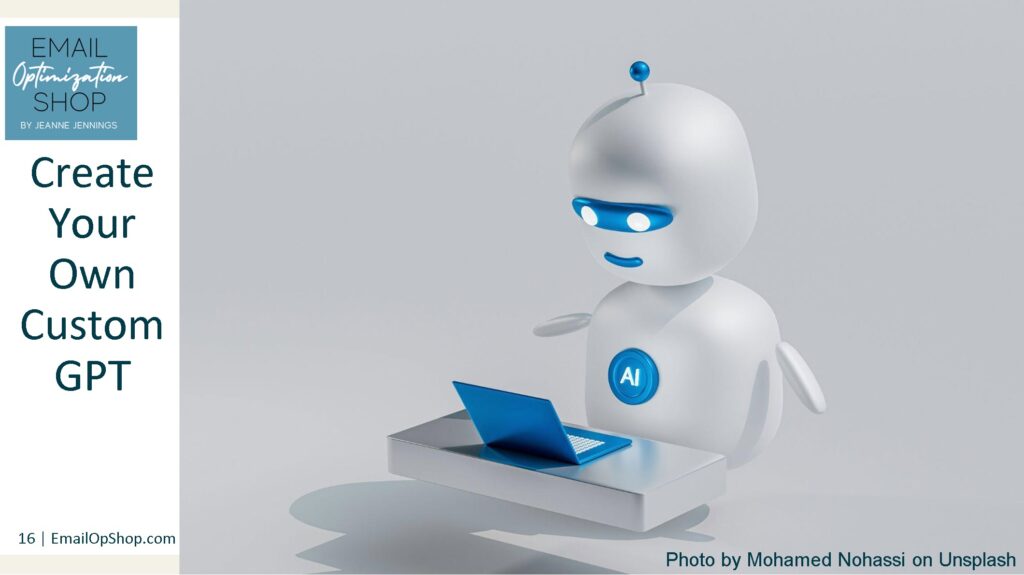
You read that right. It’s not as difficult as it sounds, and this will allow you to train it (like a Pokemon!) and it will learn the more you use it.
One of the first GPTs I created has become a sort of ‘mini-me’ – I can collaborate with it on email marketing strategy, tactics, copywriting, and more. It knows the tone, voice, etc. of my writing and it has been trained on the contents of my blog. It’s still never going to replace it – but it’s like I have an eager intern who I can delegate tasks to, as long as I micro-manage them.
Wondering where to start? My tip #5, from the first post, was to watch a webinar that Tamara and I did back in February. We walk you through setting up your own custom GPT. So I’d recommend you start there…
8. Don’t expect deep insights
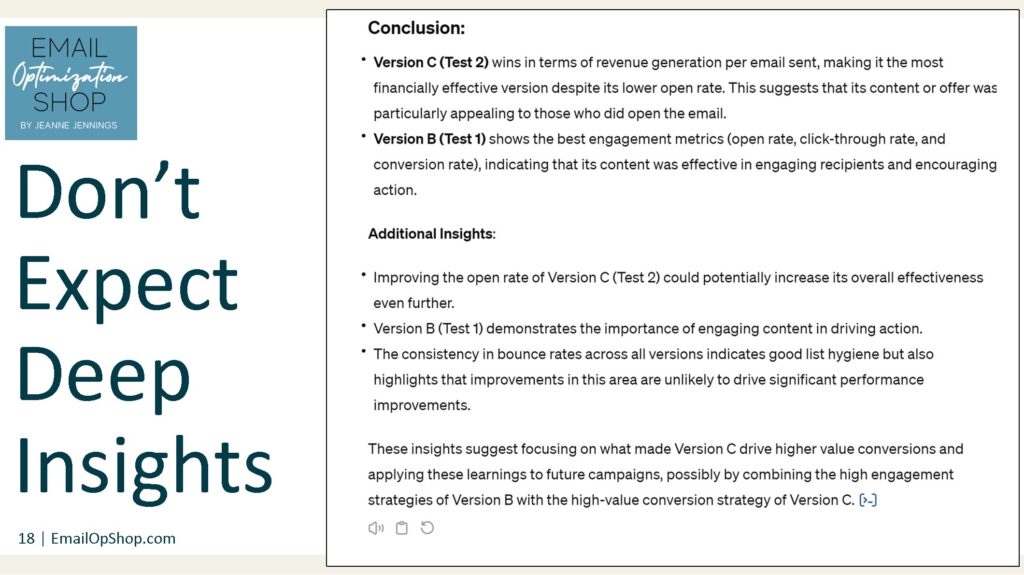
I mentioned that my ‘mini-me’ was like an eager intern. This is a good example of why I say that. Because while it can look at a spreadsheet and tell you which version of the email did better or worse on each metrics… its insights aren’t very advanced. They’re fine, probably helpful to some of the novice email marketers out there.
But if you’ve been doing this a while, you won’t be wowed. This is one area you don’t want to fully delegate to your GPT. Could it be trained to deliver this? Maybe… I personally haven’t had any luck with that. The body of knowledge is too large, and you need to apply it in a more sophisticated way than the GPT is capable of today.
9. Create your own team of custom GPTs

There I go again. Pushing you to stop reading and start doing. But seriously… it’s time.
Why a team of GPTs? Because that way you can train each in a specialty – you can one for strategy, one for copywriting, one for data analysis, one for creating charts and graphs, etc. You would not expect a single person to be excellent at all of these – so why should you expect that from a GPT? This allows you to train each in the specialized skills and information they need to collaborate effectively with you.
For instance, your charts and graphs GPT should know your brand colors and how you like your data formatted (only on decimal point on open and click-through rates, two on unsubscribes and spam complaints). Your copywriting GPT doesn’t need this info, but it should understand your brand’s tone and voice (the easiest way to do this is to ask it to mimic past copy that matches your guidelines). Why try to fill one GPT up with everything, when you can split the knowledge in a way that lets each focus?
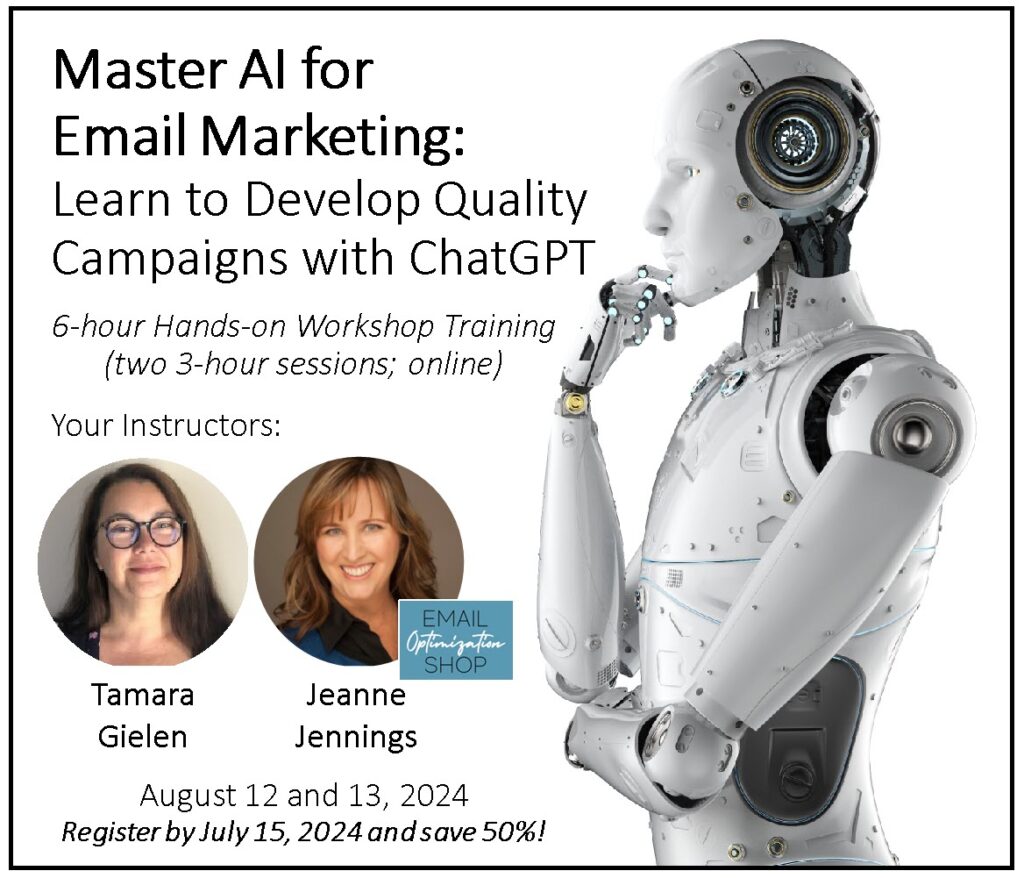
Looking to up your AI game for email marketing?
Join us for a 6-hour hands-on workshop training — you’ll create 3 of your own custom GPTs and leave with a good start on your next email marketing campaign!
10. Do use GPTs for charts and graphs
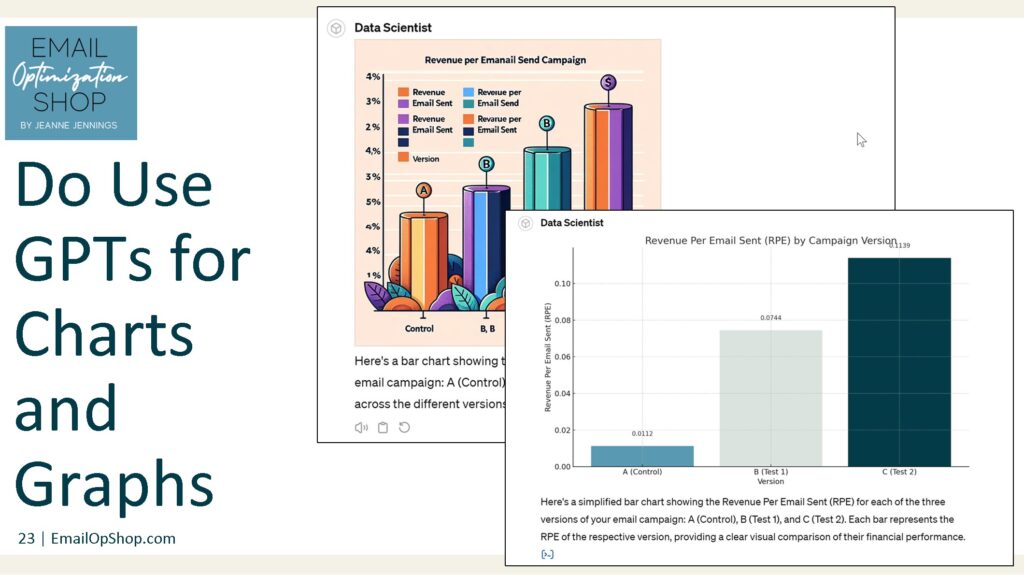
This was a revelation to me. I have some standard charts and graphs I use for clients – I’ve trained a GPT to review spreadsheets, calculate the metrics, and build them for me. It’s much quicker and easier than doing it myself in Excel or Sheets. This is an example of a rout task which can be delegated to a GPT to free up your time for more brain-heavy activity.
Funny story – when I was first doing this, I was training my GPT using a three-version test (a control cell and two test cells). Things seemed to be going smoothly. Then in response to a request for a bar chart the GPT kicked out the crazy one at the top left of the slide above. It has 4 bars! I still cannot make sense of it. But I went back and asked for something more basic in my brand colors – and got the chart at the bottom right. I fear that charts and graphs GPT is a closeted Picasso or Van Gogh.
11. Take a step-by-step approach
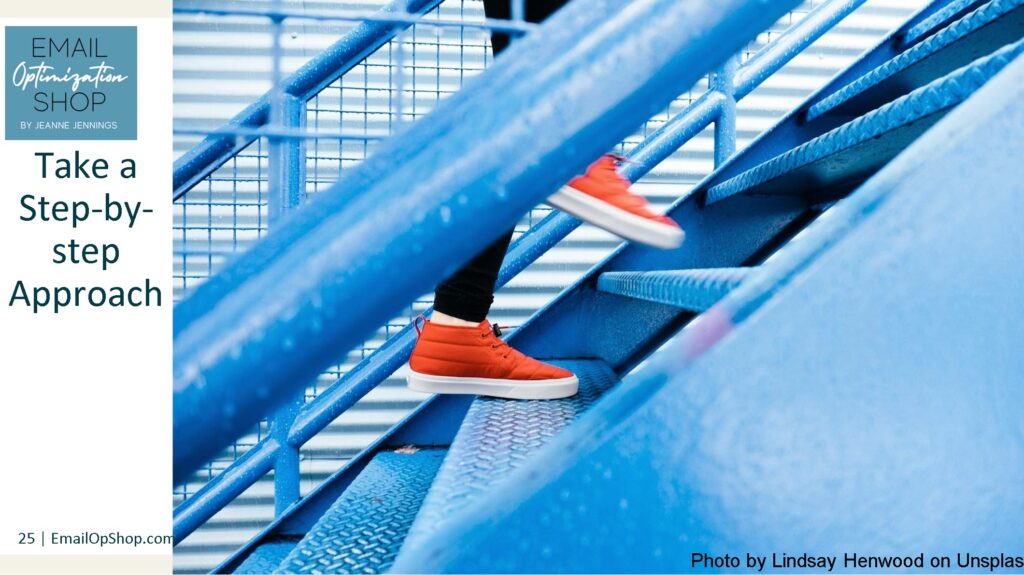
In my experience, you get the best results by walking through the process of creating an email campaign step-by-step. I start with foundations, like target audience personas, features-benefits-advantages analysis, etc. and work with the GPT to review and enhance them. Then I move onto the message map, frequency, cadence, etc. Then the copywriting, then design suggestions.
Sometimes the GPT has good data to add; sometimes it doesn’t, and I can correct the misstep right away and get us back on track. Working this way ensures you get quality output – while saving you time.
12. Iterative process delivers better results
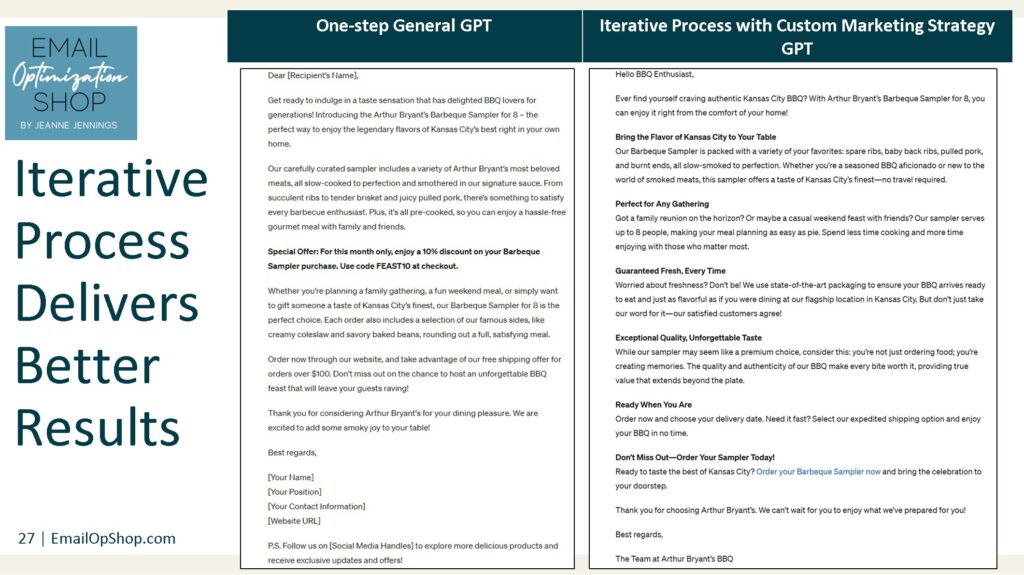
And just to drive home my previous tip…
This is a fictional campaign created for a very real product.
The copy on the left was created using a general GPT, providing some basic information and asking for email copy. You can see that it relies heavily on discounts and what I think of as ‘marketing speak.’ It’s fine, but not terribly compelling.
To get to the copy on the right, I took an iterative approach and collaborated with the GPT. We reviewed and enhanced the marketing foundations before we moved onto the plan, the outline, and the copy. It’s much better – don’t you agree?
Signing off for now… but there are 6 MORE tips to come!
One thing we heard consistently from those who attended this ’35 ideas’ session, our 4-hour pre-conference working on ‘Mastering AI for Email Marketers,’ and our February webinar, is that it’s too much. There’s a lot here to think about and grasp.
So I ‘m hoping that by spreading these 18 tips over 3 blog posts, you’ll have time to think about each one and take it in. I’m hoping that after you read each blog post you’ll go to the LLM of your choice and start applying a bit of what you’ve learned.
So watch for part 3, the final of this series, next week, right here on my blog.
And in the meantime, keep me posted on how your forays into use of AI are going.
Until next time,
jj




